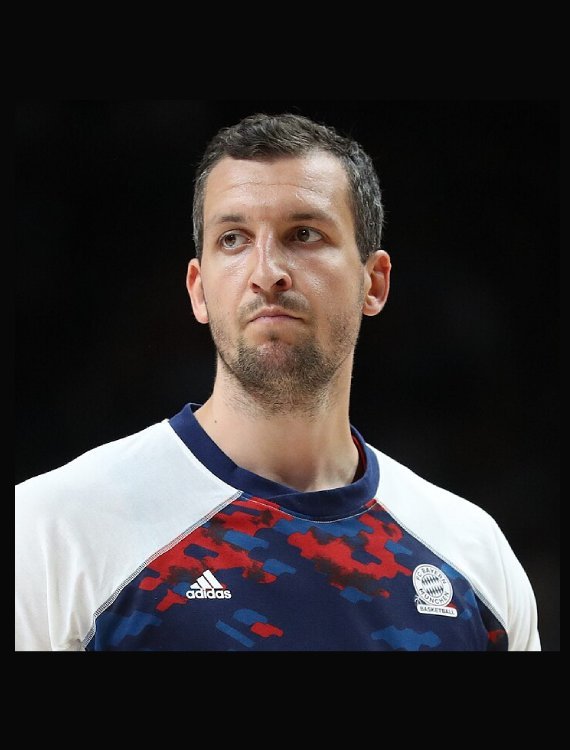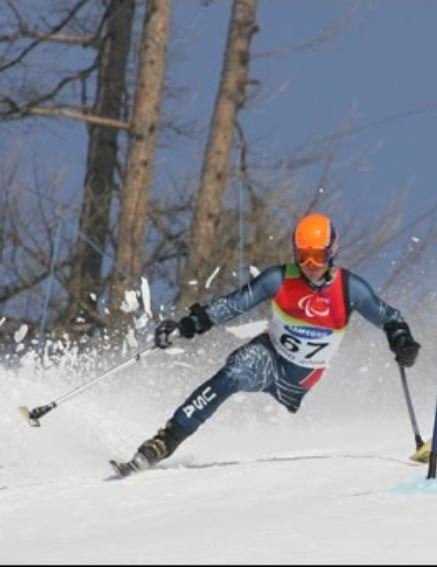How Maya Gabeira Survived Death at Nazaré and Conquered the World’s Biggest Wave
By now, maybe you’ve seen the photo: a tiny human figure skimming across a wall of water so massive it defies belief, a liquid mountain that appears ready to swallow cities. What you’re looking at is arguably the most consequential moment in big wave surfing history—a 73.5-foot behemoth at Nazaré, Portugal, ridden by a woman who, just seven years earlier, had been found floating face-down in those same waters, presumed dead.
This is the story of Maya Gabeira, the Brazilian surfer who didn’t just survive—she came back to rewrite the record books and redefine what’s possible in a sport traditionally dominated by men.
The Wave that almost took Everything
Let’s set the scene: October 28, 2013. The sleepy Portuguese fishing village of Nazaré is anything but tranquil. A massive storm system has sent enormous swells rushing toward its coastline, where a unique underwater canyon funnels and amplifies their energy to create what many consider the most fearsome surf break on Earth.
It’s here, amid these mountains of water, that a 26-year-old Maya Gabeira paddles out alongside fellow Brazilian Carlos Burle. The waves that day are monstrous even by Nazaré standards – 60 to 80 feet tall, moving with the force of freight trains.
What happens next is the stuff of surfing nightmares. Gabeira wipes out catastrophically. The wave’s impact is so violent it instantly breaks her ankle. Her life jacket—the essential piece of safety equipment in big wave surfing – is ripped from her body by the sheer force of the water. She’s dragged underwater repeatedly, each time struggling to reach the surface. At one point, she loses consciousness entirely.
“This is it; I’m going to die,” she later recalled thinking.
Carlos Burle, showing the kind of heroism that defines the big wave community, somehow manages to reach her through the chaos. He performs CPR on the beach while massive waves continue to pound the shoreline. It’s a scene of pure, heart-stopping drama – a race against the ocean itself.
Maya Gabeira survives, but barely. She’s rushed to Leiria hospital, where the true extent of her injuries becomes clear: a broken fibula and, more seriously, aggravation of a pre-existing spinal condition. What follows is not a quick recovery story. It’s the beginning of a four-year odyssey through pain, fear, and uncertainty.
The long Road back
The hospital stay was just the beginning. Maya Gabeira’s path to recovery would ultimately include three spinal surgeries over several years—the first two unsuccessful. For an athlete whose identity was built around conquering the ocean’s most formidable challenges, this period was particularly cruel. The physical pain was constant, but perhaps even more daunting was the psychological barrier she now faced.
“There were years of doubt and insecurity,” Gabeira has shared in interviews. The trauma of nearly drowning had left deep psychological scars. How do you convince yourself to paddle back out to the same waves that almost killed you?
Yet remarkably, in 2015 – still grappling with her injuries and the lingering trauma – Maya Gabeira made a decision that seemed to defy all logic and self-preservation instinct: she moved to Nazaré.
Yes, you read that correctly. She relocated to the very place that had nearly claimed her life, establishing a base where she could monitor the swells, train consistently, and gradually rebuild her relationship with those terrifying waves.
It was a move that spoke volumes about her character- a refusal to be defined by her worst moment, a determination to reclaim her narrative. But it was far from easy.
“The fear was always there,” she’s admitted. “I just had to learn how to train my mind to be comfortable with the risk.”
The Comeback for the Ages
By 2018, after countless hours of physical therapy, mental preparation, and gradual re-engagement with bigger and bigger waves, Gabeira was ready to announce her return in spectacular fashion. On January 18, she rode a 68-foot monster at Nazaré, setting her first Guinness World Record for the largest wave ever surfed by a woman.
It was a triumphant moment- but Gabeira was just getting started.
On February 11, 2020, during the WSL Nazaré Tow Surfing Challenge, she caught what she immediately sensed was “the one.” The speed, the thunderous sound of the wave breaking behind her, the pure adrenaline coursing through her veins – it all felt different, bigger, more significant.
Maya Gabeira was right. Officials measured the wave at an astonishing 73.5 feet – not only breaking her own previous record but also exceeding the size of the winning wave in the men’s division of the same competition. It was, simply put, the biggest wave surfed by anyone, male or female, that year.
For a woman who had been found unconscious in those same waters seven years earlier, the achievement bordered on mythological. This wasn’t just a comeback- it was a rebirth, a complete rewriting of what was possible.Maya
The Pioneer
Long before her near-fatal accident and spectacular return, Maya Gabeira was already a groundbreaking figure in surfing. When she first charged into the male-dominated big wave scene, the idea of a woman competing at that level was considered almost unthinkable.
She shattered those expectations early and often. Maya Gabeira became the first woman to surf big waves in Alaska, the first at California’s legendary Ghost Trees break, and the first at Tahiti’s notoriously dangerous Teahupoo. Her trophy case filled quickly: five Billabong XXL Global Big Wave Awards for Best Female Performance between 2007 and 2012, an ESPY Award for Best Female Action Sports Athlete in 2009.
But perhaps her most significant achievement has been in changing perceptions about gender in extreme sports. When Laird Hamilton—one of surfing’s most revered figures—questioned her ability after the 2013 accident, suggesting she lacked the skill for waves of that magnitude, it exposed the deep-seated biases women still faced in the sport.
Maya Gabeira’s response wasn’t a heated rebuttal. It was action. It was returning to Nazaré, mastering its waves, and ultimately riding one bigger than any man did that year. It was proving through undeniable achievement what words alone could never convey.
Maya Gabeira and the Battle for Recognition
Even after breaking records, Gabeira had to fight for proper recognition. The struggle to have women’s big wave achievements acknowledged on par with men’s accomplishments became another front in her battle.
“That was a long and often frustrating fight,” she’s noted about the effort to establish official women’s categories in big wave competitions and records. The fact that her 73.5-foot ride was bigger than any wave surfed by a man in 2020 made it increasingly difficult to justify the disparities in recognition and compensation that had long plagued women’s surfing.
Her advocacy helped create space for more women to enter big wave surfing, knowing their achievements would be properly acknowledged. Today, the increased participation of women in this extreme sport owes much to Maya Gabeira’s pioneering efforts both on and off the water.
The Physical and Mental Toll
What makes Maya Gabeira’s achievements even more remarkable is the physical condition in which she accomplishes them. Those three spinal surgeries weren’t minor procedures – they were life-altering operations that left her with permanent limitations.
Each time she paddles out at Nazaré, she does so with a body that has been fundamentally altered by trauma. The constant physical therapy, the pain management, the careful monitoring of her condition – these are just part of her daily reality.
Then there’s the mental aspect. Big wave surfing requires split-second decision-making in conditions where mistakes can be fatal. Doing this with the vivid memory of a near-drowning experience requires psychological strength that few can comprehend.
“I had to learn how to use fear as energy, as focus,” she’s explained. Rather than denying her fear, she embraced it, channeled it, and transformed it into a tool for heightened awareness in critical moments.
The Legacy of Maya Gabeira
In January 2025, Maya Gabeira announced her retirement from professional big wave surfing, closing a chapter on one of the most remarkable careers in the sport’s history. Her journey from the beaches of Rio to the towering waves of Nazaré represents something far greater than athletic achievement – it’s a testament to human resilience, to the power of facing one’s greatest fears head-on.
Gabeira’s legacy extends beyond her world records and pioneering firsts. She’s become an inspiration for anyone facing seemingly insurmountable obstacles. Her story reminds us that sometimes the wave that nearly drowns you can become the very force that propels you to unprecedented heights.
As for that 73.5-foot wave? The photo continues to circulate, a frozen moment of triumph that tells only a fraction of the story. Behind that single frame lies years of pain, doubt, fear, and unwavering determination – the true measure of Maya Gabeira’s greatness.
In the end, perhaps her most significant achievement isn’t riding the biggest wave ever surfed by a woman. It’s showing us all what’s possible when you refuse to let your worst day define you, when you summon the courage to paddle back out even when the water still holds your darkest memories.
That’s a victory no record book can fully capture.
From Ocean Mountains to Olympic Heights
Maya Gabeira’s refusal to let tragedy define her career echoes throughout the sporting world, where courage often transcends the boundaries of any single discipline. While Gabeira battled back from the brink in Portugal’s crushing waves, another athlete was facing her own mortality on a very different stage. German pole vaulter Katharina Bauer wasn’t confronting the raw power of the ocean, but rather the betrayal of her own heart – an irregular rhythm that threatened not just her Olympic dreams but her very life. Like Gabeira, Bauer would make a choice that redefines what it means to be unstoppable, proving once again that the greatest athletes are measured not by the obstacles they face, but by the courage with which they overcome them.
Photo: De S Pakhrin from DC, USA – Esta imagen ha sido extraída del archivo, CC BY 2.0,




